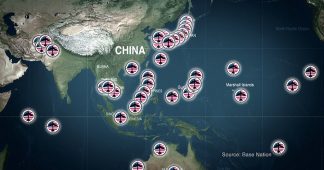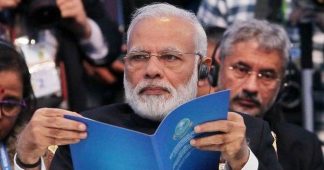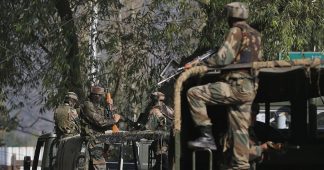The summer-long standoff ended just as a BRICS summit begins in China.
The Chinese Foreign Ministry and Indian Ministry of External Affairs have both confirmed that Indian troops have been withdrawn from Doklam/Donglang, an area which China claims as its sovereign territory while India maintains it is part of its effective protectorate of Bhutan.
The tense border standoff began in June of 2017 when Indian troops crossed through Bhutan and into Chinese sovereign territory. India claimed that China’s building of a road in the religion threatened Indian security, as the road is located near to India’s Siliguri Corridor, also known as the Chicken’s Neck, a narrow strip of land which connects India’s north-eastern provinces with the rest of the country.
China in response stated that one can build whatever one likes on one’s sovereign territory and that if Indian troops did not withdraw from Chinese land, military action against India could result from New Delhi’s violation of Chinese territorial integrity. Throughout the conflict China consistently stated that war was a last resort which China sought to avoid. This helps explain nearly three months of Chinese patience and restraint over the very delicate issue.
The standoff now appears to be over as Indian withdrawal, a crucial precondition for dialogue, has now occurred.
According to the Chinese Foreign Ministry,
“Chinese personnel on the ground have confirmed that Indian personnel and equipment that had crossed the border have been withdrawn to the Indian side.
China will continue to exercise its sovereign rights according to historical border accords”.
Meanwhile, the Indian Ministry of External Affairs has stated,
“In recent weeks, India and China maintained diplomatic communication in respect of incident at Doklam. We were able to express our views and convey our concerns and interests.
“On this basis, expeditious disengagement of border personnel at the face-off site at Doklam has been agreed to and is on-going”.
In reality, China has been fully vindicated. Indian withdrawal is in many respects an implied acknowledgement of Chinese sovereignty while India’s new found willingness to engage in dialogue with Beijing over the issue is a fulfilment of China’s only request, combined with the demand to withdraw troop. Both of these conditions have now been fulfilled by India, but only after an embarrassing summer-long stand-off that has gained India nothing but three months worth of renewed distrust from the Chinese side.
While in a material sense, this is very much a Chinese victory, in a diplomatic sense, it may also be a victory for the BRICS economic partnership.
The announcement of Indian withdrawal from Doklam/Donglang was made shortly before a BRICS summit is to begin in China. This looks to be the first time high-level Indian leaders will meet with those of China since the beginning of the standoff. Many continue to speculate that Indian Prime Minister Narendra Modi will skip the meeting out of embarrassment over the situation.
The fact remains however that India felt that it would have been awkward at the least and counter-productive at the most to go into a multi-lateral summit whose wealthiest members is China, as the only country with any major dispute with Asia’s leading power.
India’s move to enter Doklam/Donglang was always brazen in this context as India, along with Pakistan entered the Shanghai Cooperation Organisations (SCO) shortly before India entered Chinese territory. In this sense, India was almost mocking the Shanghai Cooperation Organisation by refusing to utilise the SCO as a proper forum in which to settle such disputes diplomatically.
Now though, just prior to the start of a summit of another major group where India, China and indeed Russia are also members, India has climbed down from a position of provocation and is seemingly returning to one of partial cooperation.
Apart from the obvious climb-down in face of what would have been a very embarrassing BRICS summit, there are two other possibilities which may be behind India’s decision.
First of all, it is possible that prior to the BRICS summit, Russia, a traditional Indian ally and today, China’s most important global partner, told the Indian leadership that the stand-off ought to end and that it ought to end before the BRICS summit begins, for the sake of unity and cohesion within the group.
Secondly, as India’s withdrawal comes shortly after Donald Trump’s request for Indian involvement in Afghanistan, a move highly unpopular with both Pakistan and China, there remains a possibility that in withdrawing from Doklam/Donglang, India is attempting to assert its independence from the western geo-political bloc just as sure as in going against China, New Delhi was attempting to stand against the undisputed leader of Asian geo-politics.
In any case, the Indian withdrawal has now reduced the possibility of war in the region, a development which is ultimately positive for all sides and also the wider world.











